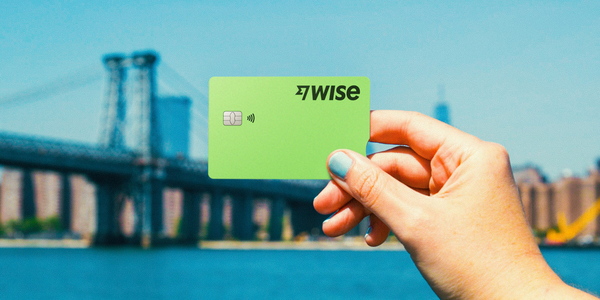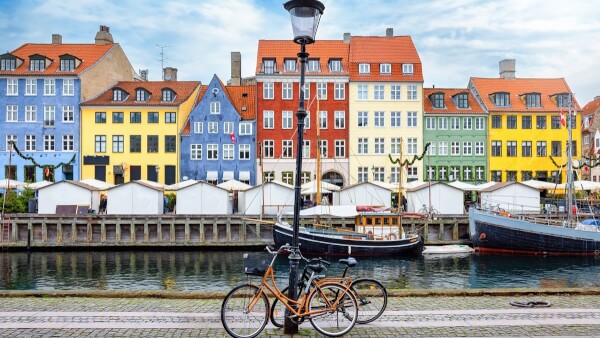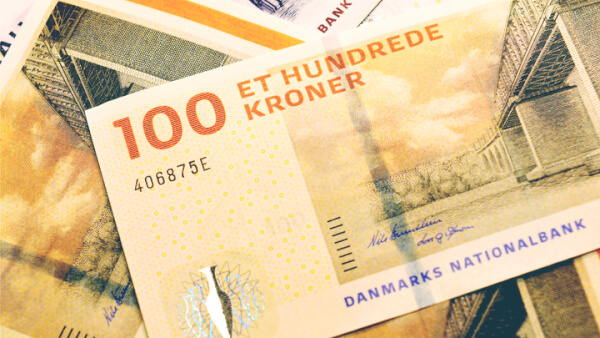Is it better to use cash or card in Denmark?
Should you pay with cash or card in Denmark? A handy guide including cash etiquette, Danish ATMs and using your UK card.

Have you heard about the term Hygge? This term describes a cosy feeling and contentedness, which the damp and rainy England might not have. If you are looking for a mini escape, welcome to Denmark - the home of Hygge. Denmark is more than just a land of fairytales. The country has everything you are looking for. From fascinating Vikings history to delicious Nordic cuisine and cutting-edge design, you will always have things to do!
And don’t forget to shop in Denmark! Part of the unique charm of Denmark is getting yourself lost by exploring the local shopping. You might find the perfect gifts, containing the joyful spirit of Denmark, for your loved ones. However, you might also be surprised that Danish VAT is 25%. That’s a lot of money!
Feeling concerned about the Danish VAT? Don’t be! The Danish VAT refund system is here to help non-EU residents, including the British, reclaim the tax on goods bought during their visit. This guide will walk you through the process, ensuring you make the most of your VAT refund in Denmark. Read on to discover how you can save!
As a very active member of the EU, Denmark also shares specific tax rules on goods and services with other countries in the union. Denmark can also decide on its VAT rate. Denmark has a very straightforward tax rate: you will mostly pay the standard tax rate of 25%.1
Determining exactly how much VAT is refunded in Denmark is very complicated. But in general, you will not get the total amount back. Here is an explanation for it:
If you use the intermediary refund agent to get your VAT refund in Denmark, you will have to pay the administration fees. The fee can vary and may be deducted directly from the refund amount. Hence, your actual VAT refund amount may differ in each case. Depending on the amount, you will typically get a refund of between 10% and 19% of the item's total price.2
If you are a tourist in Denmark, you are entitled to a VAT refund for the goods that you buy during your stay. You need to meet these conditions:3
There is more than one way to get a VAT refund in Denmark. You can either do it by yourself or ask a tax intermediary refund agent to proceed with your VAT refund. Here are some steps you can do to claim back your money:
When making a purchase, be sure to request a receipt and confirm in advance that the retailer or supplier will refund the VAT. The invoice must contain the following details:4
The sales assistant at the shop might ask you to show your identification document. So make sure you bring along your passport, ID card or other form of ID. You cannot get a refund if you are shopping on behalf of somebody else.
If you are leaving from Denmark directly to home, you should get your invoice stamped right at the airport. In order to get the stamp, you will need to show customs the following documents:
However, if you travel from Denmark to another EU country before going home, the customs in the last destination EU country should stamp your invoice. If you are travelling through multiple airports, the customs at the last EU airport must stamp your invoice.
After receiving the stamped invoice or obtaining documentation or a certificate, you must send it to the store where you purchased the goods. The store will then refund the VAT amount to you.
Or, an easier way is to go directly to the tax intermediary refund agent. Depending on which agent you use, your VAT will be refunded to you in cash, through your credit card, or other payment method. If you are currently doing your VAT refund at Copenhagen Airport, you can find these agents in Terminal 3.

The article explains the steps to get your VAT refund back in Denmark. Remember to keep this article while you are travelling to Denmark. This is one way you can save for your next adventures. Moreover, if you might want to know one more secret to save even more:
Tourists can receive a VAT refund with the card! However, if the denominated currency of the card (e.g., GBP) is different from the local currency (e.g., EUR), it may be converted automatically. The card issuer determines the conversion rate, typically with a mark-up. To minimise costs on currency conversion, consider receiving your refund with a Wise debit card, which only charges a small fee and converts at mid-market rates without markups and allows you to hold 40+ currencies, including DKK.
Please be aware that tax regulations and procedures may change over time. Always verify the information with official sources for the most accurate and up-to-date guidance.
Please see Terms of Use for your region or visit Wise Fees & Pricing for the most up to date pricing and fee information.
Sources used for this article:
Sources last checked on 11-Jun-2024.
*Please see terms of use and product availability for your region or visit Wise fees and pricing for the most up to date pricing and fee information.
This publication is provided for general information purposes and does not constitute legal, tax or other professional advice from Wise Payments Limited or its subsidiaries and its affiliates, and it is not intended as a substitute for obtaining advice from a financial advisor or any other professional.
We make no representations, warranties or guarantees, whether expressed or implied, that the content in the publication is accurate, complete or up to date.

Should you pay with cash or card in Denmark? A handy guide including cash etiquette, Danish ATMs and using your UK card.

While credit and debit cards are pretty widely accepted in Denmark, it’s still possible that while there, you might need access to some cash. Withdrawing cash...

If you’re headed to Copenhagen, you may want to understand more about the intricacies of using your money. What’s the exchange rate? Where should you take out...

The official currency of Denmark is the Danish Krone. This guide covers the best ways to exchange your money. And, looks at if you can use euros too.